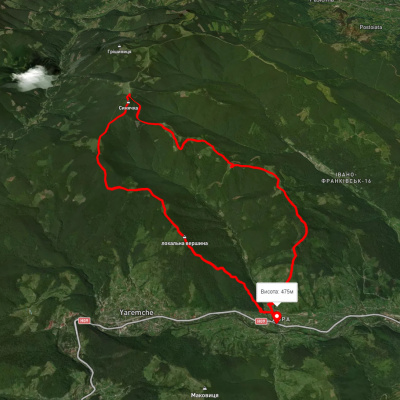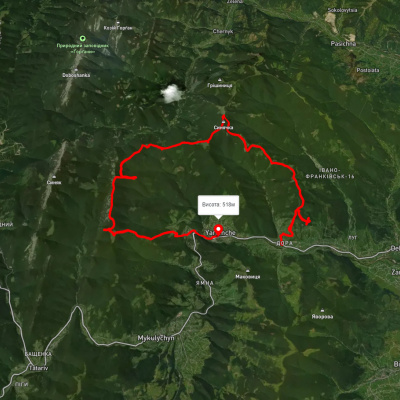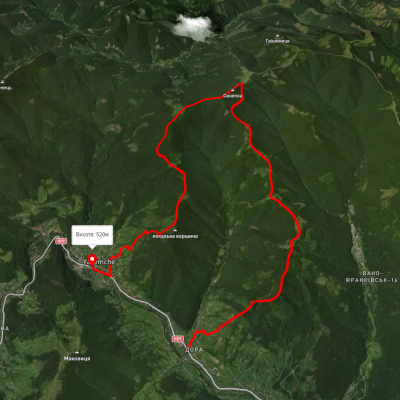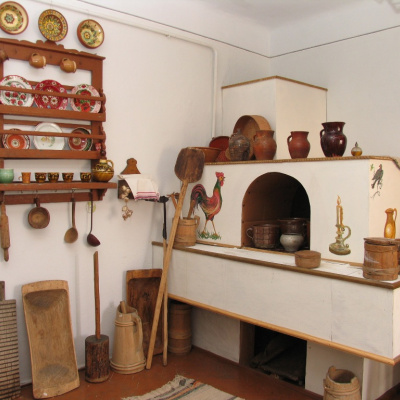Museum of the history of Nadvirna district
The Nadvirna History Museum was established by the Memorial Historical and Educational Society in 1995 to recreate the historical truth about the heroic struggle of the Ukrainian people for their independence in the 40s and 50s in the Nadvirna region. However, since traces of very ancient settlements, crafts, and trade, as well as traces of the Cossacks and the Oprishkiv movement, have been discovered in the Nadvirna region, the museum's exposition reflects all stages of the region's historical past and the actions of its prominent people.
The entire museum exposition is housed in 14 halls of the two-story building and in the basement. From the time of its construction until the 60s of the XX century, this building was a penal institution of the enslavers of our region:
From 1939 to 1941 - the NKVD;
from 1941 to 1944 - the Nazi Gestapo;
from 1944 to 1965 - the KGB.
The blood and inscriptions of those defenders of their native land who, back in the 40s and 50s of the twentieth century, wanted to see their Ukraine independent, their blue and yellow flag and their coat of arms, the trident, are preserved here. For this, they were brutally persecuted by the communist regime, subjected to brutal torture, and dunged in prisons and exiles. The people desperately resisted, and their best sons and daughters laid down their young lives. The museum reveals this tragic page of our history in numerous facts, photographs, documents, exhibits, memoirs of participants, and printed materials from the KGB archives.
The museum offers the following chapters of our history:
1. The struggle against all the oppressors of our land until the twentieth century.
2. The First World War: USS, UNR, ZUNR, formation of political parties.
3. Soviet power in Western Ukraine, Bolshevik terror of 1939-1941.
4. German occupation of the region, creation of the UPA.
5. The UPA's struggle against the fascist and Bolshevik regime.
6. The process of formation of Ukrainian statehood in the 80-90s. XX century.
7. Ethnographic room.
8. History of crafts and trades of Nadvirna district.
9. Glorious countrymen.
10. Three halls are occupied by the Cultural and Artistic Foundation named after Volodymyr Luciv, a world-renowned bandura singer, English citizen, and native of Nadvirna.
It houses priceless books and epistolary heritage, an inexhaustible source for artists, scholars, and writers. There is correspondence with Hryhorii Kruk, Mykhailo Moroz, Yakiv Hnizdovsky, and other prominent people. These materials can be used for writing scientific papers, research, and studies.
Accommodation around Museum of the history of Nadvirna district:
Nearby hiking trails near Museum of the history of Nadvirna district:
Які маршрути проходять повз Museum of the history of Nadvirna district?
Пропонуємо пройти такі туристичні (пішохідні) маршрути через/біля Museum of the history of Nadvirna district: прис. Дора - скеля Білий Камінь - г. Синячка - пол. Щівка - прис. Дора, с. Дора, через г. Синячка, пер. Пересліп, пол. Туршугувата, хр. Явірник до м. Яремче, с. Дора, через г. Синячка, хр. Чорногориця до м. Яремче, с. Дора, через г. Синячка, пол. Чорногориця до м. Яремче, с. Дора, через г. Синячка, пер. Пересліп до м. Яремче, с. Дора, через г. Білий Камінь, г. Синячка до с. Дора





